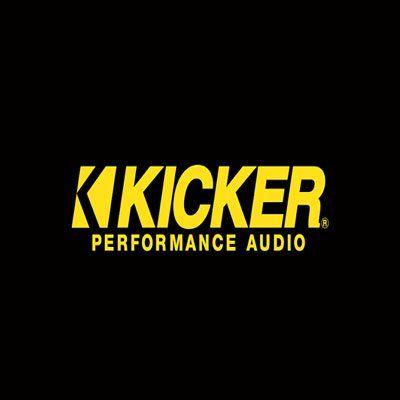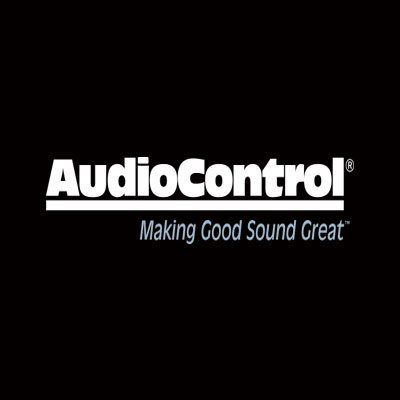559 Car Stereo & Alarm
FREQUENTLY ASKED QUESTIONS
-
HOW MANY WATTS DOES THIS SUB PUT OUT?
We often come across this question, but unfortunately, it reveals a lack of understanding of how a vehicle's stereo system operates. The answer to this question is zero. None. Nada. A subwoofer or any speaker does not produce wattage but rather receives power from an amplifier to produce sound. Therefore, the correct question to ask is, "What is the maximum wattage that this subwoofer can handle?"
-
HOW MANY WATTS DOES THIS SUB HANDLE?
There are two types of power handling associated with any speaker. One is thermal power handling. This is the amount of power the speaker can dissipate as heat. This number is generally fairly fixed. The other is mechanical power handling. This is the amount of power the speaker can handle before the moving assembly reaches its mechanical limits. This number can vary depending on enclosure type and frequency. An unfortunate industry trend in the past decade is that companies have begun to grossly overestimate the power handling of their subwoofers. Save for a few respectable companies, most speakers that say "1500 watts" on them would probably be crying for their mother after being fed a mere 500 watts. Power handling on subwoofers (and the power output of amplifiers) needs to be taken with a grain of salt. That shiny chrome sub that you just saw on eBay that looks too good to be accurate, is "competition-rated," and can handle "3000 watts" is probably just that—too good to be true. There are two types of power handling associated with speakers. One is thermal power handling, which is the amount of power the speaker can dissipate as heat. This number is typically fixed. The other is mechanical power handling, which is the amount of power the speaker can handle before its moving parts reach their limits. This number can vary depending on the type of enclosure and the frequency.
-
HOW MANY WATTS DOES THIS AMP PUT OUT?
It is disappointing that there is a trend in the industry to exaggerate the wattage that amplifiers produce. We have come across amplifiers that claim to produce 1000 watts but have only a single 30-amp fuse. This means that the amplifier would need to have an efficiency rating of 238 percent, which is impossible. Hence, the most logical explanation is that most amplifiers today deliver only half or one-third of the power they are advertised to provide. To avoid falling prey to such practices, it's best to stick with well-known brands that have a proven track record of producing quality products.
-
MY FACTORY CD PLAYER HAS A CD STUCK IN IT. CAN YOU HELP?
Factory CD players, especially CD changers, are built and assembled as cheaply as possible, which is great for vehicle manufacturers' bottom line. However, it leads to problems down the road due to the many small motorized parts. We have seen vehicles that are only a few years old with significant issues with jammed CDs. Often, people hope that we can "just get the CD out" and fix the problem. Unfortunately, what most people don't understand is that if it happens once, it will likely happen again. The CD mechanism inside the unit may have been permanently damaged.
Replacing the factory radio with an aftermarket unit is typically the most cost-effective solution. It is cheaper than you might think, and you will have a new unit with a warranty. The new aftermarket radio will likely have more features, such as aux and USB inputs, and a better amplifier. If we install a new radio for you, we will be happy to retrieve the CD from your old unit at no extra charge. However, please note that the radio itself will most likely not be salvageable.
-
I INSTALLED AN AMPLIFIER IN MY CAR, AND NOW MY LIGHTS DIM WHEN I PLAY MY STEREO LOUD. WHY IS THAT?
If your car's amplifier is not drawing enough power from the vehicle's electrical system, you may notice your lights dimming. To address this issue, follow these steps:
1. Check that your power wire is large enough.
2. Your ground wire should be at least as large as your power wire, if not larger.
3. Ensure that the ground wire is firmly attached to the vehicle's body and that there is no paint in the connection area.
4. Upgrade the wires that run from the car's battery to the frame (factory ground) and from the alternator to the battery if necessary.
If you have completed all these steps and your lights are still dim, it may be an indication that your car's electrical system is not strong enough to support the amplifier. In this case, you may need to make further changes, such as adding a capacitor, installing a second battery, or upgrading the alternator.
-
I WANT TO HAVE A SUB AND AMP INSTALLED IN MY VEHICLE, BUT I WANT TO KEEP MY FACTORY HEAD UNIT. CAN I DO THAT?
Certainly. In recent years, there has been an increasing trend of integrating factory radios with cars, both visually and electrically. To address this, we use a device called a Line Output Converter (LOC) that connects to the speaker outputs of your factory radio and generates a usable RCA preamp signal for your amplifier. One of the advantages of using LOC is that it is usually a quick and easy installation and allows you to maintain the factory look. However, there are some potential drawbacks. The factory radio might have a limit on the signal quality, which could impact the sound quality. Additionally, any signal that goes to your aftermarket amplifier also goes to your factory midrange speakers. As a result, it is not possible to remove the low frequencies from your midrange speakers to improve sound quality because doing so would also prevent the low-frequency signals from going to your subwoofer. The decision to install a line output converter should be based on your goals for your audio system, as it can be either a compromise or a great solution.
-
I HAVE A PAIR OF 10" SUBS INSTALLED IN MY CAR AND MY BUDDY JUST GAVE ME A DIFFERENT 12" SUB. CAN I HAVE THEM ALL HOOKED UP AT ONCE FOR EVEN MORE BASS?
It is technically possible to connect subwoofers of different sizes in a vehicle. However, we strongly advise against it. Mixing subwoofers of different sizes will result in a poor-quality sound system, which may also not be very loud due to a cancellation effect. According to its parameters, each subwoofer has a distinct frequency response. When these different frequency responses overlap, the sound quality is often significantly reduced. Instead of combining different subwoofers, it is better to select the one that suits your needs best and ensure that it is installed in a properly designed enclosure.
-
MY FRIENDS STEREO IS A LOT LOUDER THAN MINE. WE HAVE THE EXACT SAME EQUIPMENT. WHAT IS THE REASON FOR THAT? HE HAS A 4 DOOR CAR AND I HAVE A TRUCK.
A crucial aspect of car audio systems that is often disregarded is the acoustics of the vehicle itself. Every vehicle has its own unique way of amplifying certain frequencies over others. For instance, large SUVs tend to amplify deep low bass, making them an ideal choice for a "ground pounder". In contrast, extended-cab pickup trucks, while relatively large, do not have as much acoustical gain. So, how do you determine the best audio system for your specific vehicle? It is often a matter of trial and error. At Sounds & Motion, we have installed stereos in nearly every imaginable type of vehicle, and we thoroughly understand what works and what doesn't. We would be delighted to share some of this knowledge with you and invite you to visit us to discuss what type of system would work best in your car.
ABOUT 559 CAR STEREO & ALARM
We are a premier full-service car stereo, marine stereo, truck stereo, and ATV stereo sales and installation dealer throughout the Central Valley. We offer the very best in high-end vehicle audio, LED vehicle lighting, vehicle remote start, and car alarm systems.
STORE HOURS
Monday - Friday 9:00am to 6:00pm
Saturday 9:00am to 5:00pm
Sunday 10:00am to 5:00pm
© 2024 Content, including images, displayed on this website is protected by copyright laws. Downloading, republication, retransmission or reproduction of content on this website is strictly prohibited.
Terms of Use | Privacy Policy | Accessibility | Website Built by BROADPROXIMITY
















